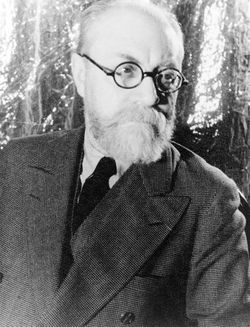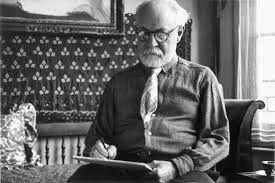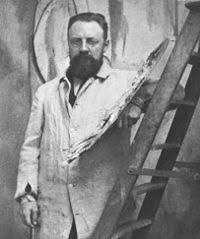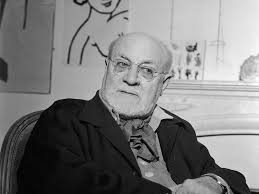
1869 - 1954
Henri Matisse

description
Henri-Émile-Benoît Matisse was a French artist, draughtsman, printmaker, and sculptor. He was the leader of the Fauvism movement and is known for both his use of color and his fluid and original draughtsmanship. Apart from Fauvism, he worked in other genres such as Impressionism, Post-Impressionism and Cubism.
Henri was born into the family of a prosperous grain merchant. His father insisted that his son should study law. However, that did not happen. One day, the young man had an appendectomy. Recovering after the operation, he began painting and soon decided to become an artist. His father was disappointed by the decision of his son, and deemed it unserious. In spite of this, Henry went to the Académie Julian to study art. During his student years, he often visited the Louvre and learned about works by famous French and Dutch artists.
Initially, young Matisse painted still lifes and landscapes in a traditional style. However, he searched for the direct transmission of feelings with the help of intense color. In his still lifes, he introduced his own logic and approach to creating a very different world from the world of Impressionists. “I prefer to sacrifice Impressionist charm in order to achieve greater certainty,” the artist wrote. In 1905, the artist exhibited a number of these “wild” works at the Autumn Salon. These paintings made a big splash, and laid the foundation for Fauvism. The movement lasted only a few years, till 1908.
At the same time, Matisse always searched for a harmonious combination of external simplicity and sophistication in the performance of artworks. He taught around 100 students at his school. The influence of his ideas is felt in many areas of contemporary art throughout the world.
Key ideas:
– Searching for his own unique style, Matisse mirrored the development of art in general. He started from Realism and copied the paintings of past greats. Then he studied the works of Impressionists, Neo-impressionists and Post-Impressionists, displaying the art of other cultures in his work. The artist spent a lot of time studying the key features of Oriental art and Spanish paintings. The influence of Oriental art can be easily felt in Matisse’s paintings from the 1900s. Depicting rhythmic and fanciful wriggling patterns, Matisse achieved clearly outlined contours, and a harmonious balance of design and color.
– Paintings that Matisse created during the period of Fauvism (1905-1908) are characterized by flat forms, clear lines and less strict pointillism.
– Creating sketches, Matisse began to use the technique of clippings from colored paper (“decoupage”).
– The world of Matisse is a world of dances and pastors, music and musical instruments, beautiful vases, juicy fruit and greenhouse plants, vessels, carpets, bronze figurines and endless views from windows.
– His style is distinguished by the flexibility of lines, conveying a variety of silhouettes and outlines that provide rhythm to his strictly thought-out, mostly balanced compositions.
– Dissonance became the most striking feature of the artist’s work. Continually practicing new ways of expressing thoughts with pure colors and simple forms, he always stuck to his main principle – striving for harmony.
– Matisse managed to harmoniously express the immediate emotional sensation of reality in the most rigorous artistic forms.
– His canvases depicting female figures, still lifes and landscapes are the result of a long study of natural forms and their bold simplification.
– The artist tried to synthesize impressions. In his famous panel “Dance”, he presented an ecstatic dance, most likely inspired by his feelings watching “The Russian seasons” by Sergei Diaghilev and the performances of Isadora Duncan. Greek painting and the decorativeness of African motifs also inspired him.
– His travels to Spain, as well as Tangiers and Morocco, enriched his paintings with new national motifs and spatial solutions, including decorative exoticism. This can be seen in famous canvases such as “Spanish Still Life”.
1869
1889
1891
1896
1905
1905 - 1909
1909
1912
1911 - 1913
1940
1947
1954
The birth of the artist
The first drawings

Immersion in painting

Sold two works

Fauvism

Traveled around the world

Serhei Schukin became Matisse’s main patron

The first exhibition of the artist

“Odalisks”

“Romanian Blouse”

He began to work on the decoration of a small chapel

The death of the artist

Henri Matisse
On Artist
flow
Japanese painting
Impressionism
Post-Impressionism
friends
Andre Derain
Pablo Picasso
Pierre Bonnard
John Peter Russell
Jean Puy
Maurice de Vlaminck
Paul Jean Flandrin
Paul Signac
Henri Edmond Cross
Charles Camuan
artists
Valentin Serov
Edouard Manet
Antoine Watteau
Nicolas Poussin
Jean Baptiste Simeon Chardin
Gustave Moreau
William Bouguereau
Vincent van Gogh
Edvard Munch
Pierre Auguste Renoir
Alfred Sisley
Eugene Carriere
Antoine-Louis Bari
Emile Antoine Bourdelle
Paul Cezanne
William Turner
By Artist
friends
Juan Gris
Andre Derain
Pablo Picasso
Henri Lebask
Oton Freezе
Xavier Martinez
artists
Patrick Henry Bruce
Henrik Gottlieb
Man Ray
Stuart Davis
Max Weber
Layosh Tihany
Mark Shagal
Lee Krasner
Max Pechstein
Fernand Leger
Chaim Soutine
Karel Appel
Balcomb Green
Mikhail Larionov
Guan Zilan
Carlos Nadal
Matthew Smith
